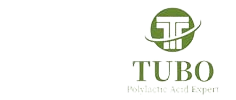In a world where first impressions matter and performance can’t be compromised, DuPont paper offers a unique value proposition: the durability of plastic with the printability of premium paper.
Whether you’re speaking to a procurement officer, a packaging engineer, or a marketing director, this sales pitch is your tool to clearly communicate what sets DuPont paper apart—and why it’s the smarter choice in every industry.
🗣️ Opening Pitch
“Let me ask you something—how often do your printed materials tear, fade, or get ruined by water or chemicals? What if I told you there’s a way to eliminate that risk, while still maintaining the professional appearance of high-end paper?
DuPont paper is not just paper. It’s engineered strength in a printable, flexible, and sustainable form. Whether you’re printing labels, manuals, tags, or packaging, our synthetic paper is designed to look sharp and last longer—no matter the conditions.”
💡 Key Value Proposition
“DuPont paper delivers three unbeatable advantages:
-
Durability – Tear-resistant, waterproof, and chemical-resistant.
-
Print Quality – Compatible with offset, digital, UV, and flexo printing.
-
Sustainability – Recyclable and made to reduce waste over time.
You get a premium feel with industrial-level toughness. It’s where form meets function.”
🧪 Feature Breakdown (with Benefit Hooks)
🟦 Waterproof & Tear-Resistant
“Imagine your materials surviving rain, oil spills, or rough handling—and still looking brand new. That’s what DuPont paper does. No more reprinting damaged signs or replacing faded labels.”
🟦 Chemical and UV Resistant
“Need labels for outdoor use or industrial environments? DuPont paper resists fading, cracking, and breakdown caused by sun, solvents, or extreme conditions.”
🟦 Excellent Printability
“Whether it’s high-speed offset runs or customized digital prints, DuPont paper accepts ink beautifully. Vivid colors, sharp text, and no smudging—plus faster drying times.”
🟦 Lightweight Yet Strong
“DuPont paper gives you premium performance at a lower shipping cost. It’s lighter than laminated paper and often eliminates the need for secondary coatings or films.”
🟦 Writable & Printable
“You can write on it with pen, pencil, or marker—something you can’t do with many plastic materials.”
🎯 Industry Applications (Tailor as Needed)
☑️ Packaging & Labels
“Stronger than normal labels, resistant to water, oil, and wear—perfect for cosmetics, food, logistics, and medical labeling.”
☑️ Tags & Manuals
“Think hang tags for fashion, care labels, safety instructions, or user manuals that last for years without fading or tearing.”
☑️ Outdoor Signage & Maps
“Perfect for field guides, safety signs, or maps used in agriculture, mining, or marine industries.”
☑️ ID Cards & Certificates
“No lamination needed—DuPont paper can withstand years of handling while retaining its appearance.”
